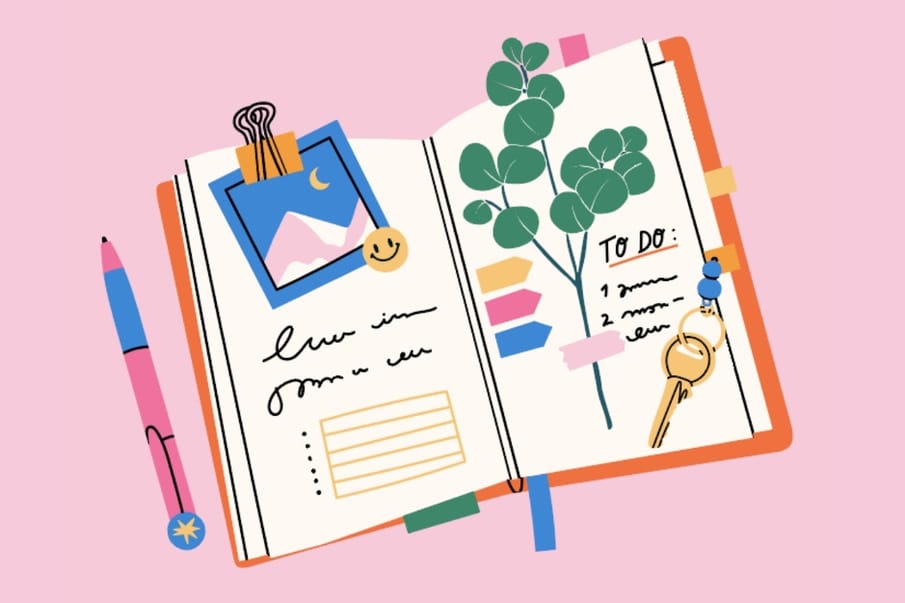Explore these journaling techniques and find one that most resonates with you
Whether it is contained in a simple, unassuming notebook or comes covered in personalised stickers to express yourself, journaling has long been a staple pastime for many. Within the pages, there can be elaborate designs that take hours to sketch out, endless deep thoughts and questions to yourself, or just simple lists noted down – but, somehow, all styles help us to make sense of the world around us.
The act of journaling can be incredibly personal and individual, but there are also specific methods that could be of use, too. Naturally, this begs the question: which one best suits your specific goals?
Here, we’re exploring four popular methods of journaling, looking at how to set yourself up to get the most from the activity, as well as understanding the unique benefits they offer. Each technique can support you in different ways, but it can take some trial and error to find out what works best for you. So, what’s on offer?
Bullet journaling
If you were on social media around 2013, then you may be aware of the viral moment bullet journaling had. Countless blogs and social media pages were dedicated to sharing stunning spreads, with perfect aesthetics that seemed to require excellent penmanship and creative eyes. Searching for inspirational images might have made you think this approach was unobtainable and intimidating, however, that’s not the case. All you need is a notebook, a pen, and maybe a ruler – and a reminder that a creative outlet is allowed to be imperfect.
The brainchild of Ryder Carroll, the modus operandi of this journaling method is to ‘track the past, organise the present, and plan for the future’. This is all done using ‘bullet points’ or lists. The notebook is divided into specific sections with themes such as ‘goals’, ‘finances’, or ‘gym tracker’ – but can be more personalised to your taste, with things such as reading trackers and reviews, or TV show ratings. Another key part is setting up a ‘future log’, which is where you can plan and track upcoming tasks and events – you could do this daily, weekly, or monthly.
But the fun part is using colour and design to unleash your creative side, and make the pages appealing to you. There are no rules on imagery or styles you have to follow; it’s a chance to experiment and express yourself. Overall, each bullet journal is customised to you; a multiplicity of needs managed on paper, as well as being a place to process your thoughts and emotional inner universe. For inspiration and guides, visit bulletjournal.com.
Morning pages
This daily practice entails writing three pages of long-hand stream of consciousness, as a way to start your day. Simply commit pen to paper without second-guessing. There’s no need to overwork it, or intellectualise what you log on the page. Just let it flow.
Julia Cameron is the creator of this method of journaling, as outlined in her hugely popular book, The Artist’s Way. The idea of writing out your stream of consciousness first thing in the morning is to prevent your ego from ‘getting in the way’ – letting go of weighty worries, thoughts, intricacies, and other blocks.
This kind of journaling can be very freeing. Some days, you may surprise yourself with what comes out on the page in these moments. On others, you may find that you have a complete block and can only manage to put down ‘I don’t know what to write’ over and over again. Both scenarios achieve the same thing: to get your brain moving, and to allow yourself to work through whatever is going on inside.

Gratitude journaling
Gratitude journaling can come in a variety of formats, but the basic idea is to record the things that you are thankful for. You could focus on a specific area in your life, such as work, your relationship, or your health – or you could simply write down all the things that you appreciate about the day or week. It could be a brief list, or you could expand on each point and explore what it means to you. Even if it’s just something small – such as a friend sending you a check-in message at the end of a long stressful week – this is an opportunity to sit with your feelings.
As for wellbeing benefits, the positive impact of gratitude journaling has been well-documented, supporting everything from depression to stress and anxiety – but that’s not all. A 2019 review of research, published in the Journal of Positive Psychology, found that keeping a gratitude journal can lead to a significant drop in diastolic blood pressure, with 2023 research, in Frontiers in Psychology, noting gratitude can improve cardiovascular health – notably having a positive impact on biomarkers of cardiovascular disease risk, such as asymptomatic heart failure, and autonomic nervous system activity.
The Five-Minute Journal
Favoured by celebrities such as Emma Watson (see her ‘What’s In My Bag’ interview for Vogue), The Five-Minute Journal is designed to help you tune-in to the power of positive psychology for six months. The idea is very simple: take just five minutes of your day to fill out the prompts. Alex and Mimi Ikonn are the creators of the journal and, according to their website, more than two million copies have been sold so far.
This setup is all about building a habit over the course of six months, by which time you will need another journal. Your daily practice will log three things you are grateful for, what made that day great, a daily affirmation, three highlights of the day, and space to record any lessons learned that day.
You can order yourself a copy of the much-loved journal from intelligentchange.com. You can also take inspiration from the technique and adjust it to suit your specific needs. For example, you could change the daily questions to something that suits your current goals, or to highlight areas of wellbeing that you want to explore more going forwards.
Not every journaling technique will work for every person, which is why finding a method that resonates with you is vital. And when you consider the benefits journaling can bring for both our physical and mental wellbeing, it’s worth finding one that works. So, which will it be for you?
Subscribe to Happiful magazine to get exclusive journaling pages in every issue.


Comments